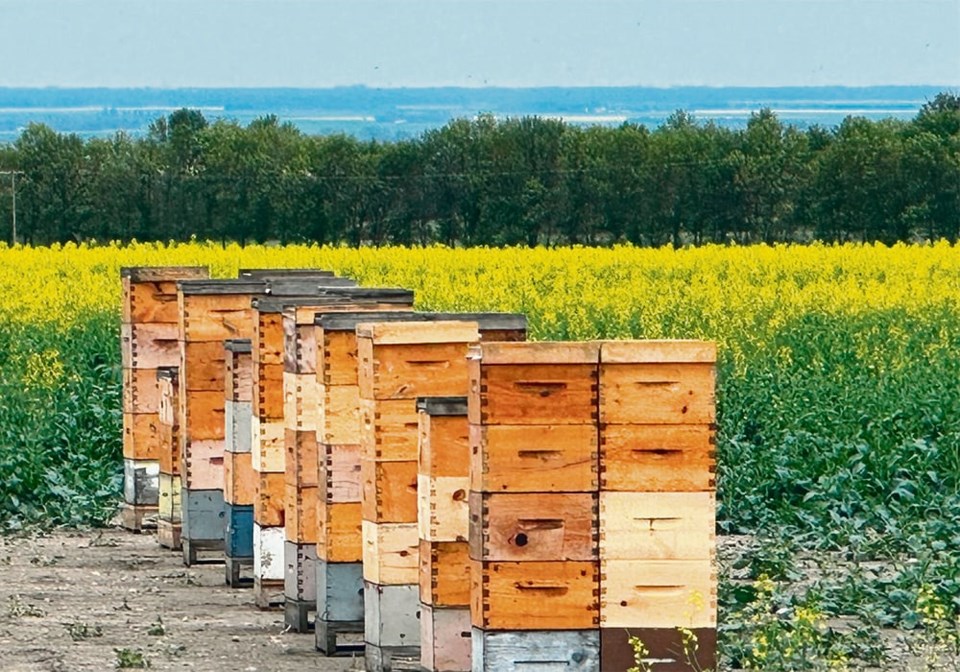WESTERN PRODUCER — Total honey production across the Prairies is expected to be close to average this year due to widely variable precipitation and drought that have affected crops in much of the region, said an industry leader.
“I think honey production has been all over the map depending on where you’re at and how much rain the farmers received in that area,” said Rod Scarlett, executive director of the Canadian Honey Council.
“It could vary dramatically, and it could vary dramatically with the same (beekeeper) from one yard to another yard depending on if there’s a thunder shower at the right time. We have areas where the drought hit and there are no crops, then we have areas where there’s been too much rain, and then we have some other areas that are just about right.”
Most of Canada’s commercial honey production occurs in Alberta, Saskatchewan and Manitoba, with Alberta providing as much as 60 percent, said Scarlett. Although beekeepers on dryland crops in southern Alberta have been hit by drought, most of the province’s honey producers are roughly above a line north of Calgary where conditions have generally been more favourable, he said.
The province’s beekeepers are enjoying a better season that they did last year, said Lorne Prins, vice-president of the Alberta Beekeepers Commission. Honey producers in 2022 were recovering from record-breaking average losses of as much as 45 percent of their bees because of high levels of varroa mites that winter.
“Generally, people are feeling fairly optimistic about their crop,” said Prins about this year’s conditions. “I haven’t heard anybody call it a bumper crop yet, but I guess when you’re looking at last year, even in perspective, it is looking pretty good. On a 10-year average, it is probably looking very average.”
It is currently hard to summarize how the season is going province wide “because there’s some people in the central region who have had a really good mixture of moisture and sunshine,” he said. “And then there are other producers, like their next-door neighbour, who might have missed the rain and just had a few more cloudy days, and they’re not having nearly as good a year.”
Prins has noticed differences across his own operation near Gull Lake northwest of Lacombe, Alta. “And my operation is only 30 to 40 kilometres wide.”
Periodically, high levels of wildfire smoke across Alberta that first raised concerns in May turned out to have not much impact, he said. Smoke is used by beekeepers to make bees less active and more docile.
“Yeah, it looked like it was going to be a disaster, but I think the majority of the smoke did not coincide with our peak nectar flow, so when the nectar was out there, the bees were able to fly for the most part.”
Beekeepers will have a better handle on their honey production once this year’s nectar flow has stopped for the season, said Prins. “In some of our yards, the flow is essentially over,” he said during an interview Aug. 10.
“It’s just a matter of now gathering what’s out there, so some yards in some areas will have that late flow for another week or two. But in my region specifically, typically by mid-August everything has shut down as far as nectar flow goes.”
You can no longer count on social media to deliver important news to you. Keep your news a touch away by bookmarking SASKTODAY.ca's homepage at this link.
Here's why you should bookmark your favourites.
Subscribe to SASKTODAY.ca newsletter to get our daily news to your inbox.




